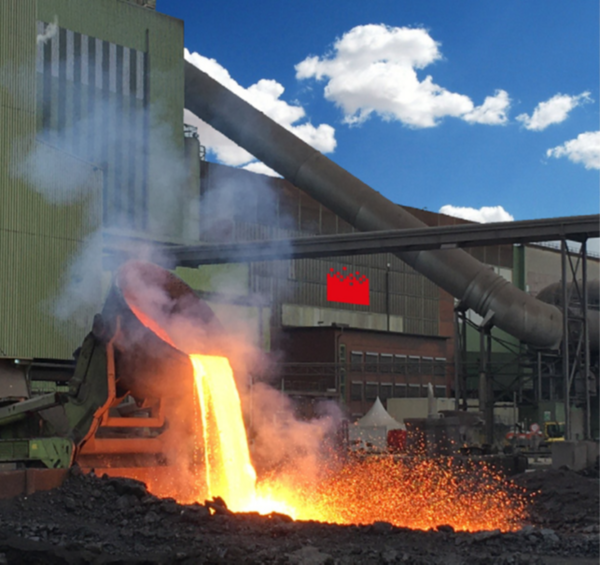SABINE
SABINE - Steel mill slag as a binder for geotechnical building materials
Resource-efficient circular economy - construction and mineral material cycles (ReMin)
The construction industry has a high demand for mineral raw materials. At the same time, other branches of industry produce mineral by-products such as slag or ash. In the interests of a resource-efficient circular economy, the SABINE project aims to use these as secondary raw materials in building materials such as cement.
The project is being funded as part of the "Resource-efficient circular economy - construction and mineral material cycles (ReMin)" funding measure. "ReMin" is part of the BMBF research concept "Resource-efficient circular economy" and is aimed at resource-efficient construction and the expanded use of mineral secondary raw materials from construction waste, slag, ash and mining residues.
Use of steel mill slag
Slags are produced as a by-product in the manufacture of metals, such as blast furnace slag in the production of pig iron or electric furnace slag in scrap-based steel production. The slags differ significantly both chemically and mineralogically. The water-quenched and therefore glassy solidified blast furnace slag - the granulated blast furnace slag - has been used in cements for 140 years, as it reacts latently-hydraulically. Crystalline steelworks slag, on the other hand, does not usually have this property and has so far mainly been used as aggregate in road construction. The SABINE project is now investigating how steel mill slag can be treated, processed and activated so that it can also be used as an alternative binder in building materials.
Alkaline activated binders
The basic effect of alkali-activated binders has been known for over 100 years. The addition of a highly alkaline activator to a precursor in the form of slag, ash or rock flour initiates the development of strength. Depending on the type of material, cross-linked silicate structures are formed, i.e. inorganic long-chain molecules known as geopolymers, or the calcium silicate hydrates known from cement hardening. Concretes with alkali-activated binders are already being used in isolated cases as sustainable building materials. Due to the proportion of lime and silicate, steel slags also have the potential to be alkali-activated.

Geotechnical building materials
Previous research has shown that crystalline steelworks slags such as electric furnace slag are not as easy to activate as glassy granulated blast furnace slag. In particular, it has not yet been possible to achieve comparable strengths. It is therefore not possible to use it in a structural building material such as concrete. However, there are a number of geotechnical applications in which even lower strengths are sufficient:
- annular gap masses for mechanized tunnel excavations - liquid soil for backfilling pipeline trenches - sealing wall masses for underground sealing walls
These construction materials are the focus of the SABINE project. Their durability is an additional requirement, as they are in contact with acidic or sulphate-containing groundwater, for example. Here, alkali-activated binders have already been able to prove that they sometimes even surpass the quality of cement-based building materials.

Funding measure
Resource-efficient circular economy - construction and mineral material cycles (ReMin)
Project title
SABINE - Steel mill slag as a binder for geotechnical building materials
Duration
01.02.2021-31.01.2024
Funding reference
033R262
Funding volume of the consortium
1,013,589 euros
Contact
Dr.-Ing. Christian Thienert
Studiengesellschaft für Tunnel und Verkehrsanlagen - STUVA - e. V.
Mathias-Brüggen-Str. 41 | 50827 Cologne
Phone: 0221 59795-0
E-mail: info@stuva.de
Project partners
STUVA e. V.; MC Bauchemie Müller GmbH & Co. KG; FEhS - Institut für Baustoff-Forschung e. V.; PORR GmbH & Co. KGaA || Associated partner: Georgsmarienhütte GmbH
Internet
sabine.stuva.de
Data sheet
Download data sheet